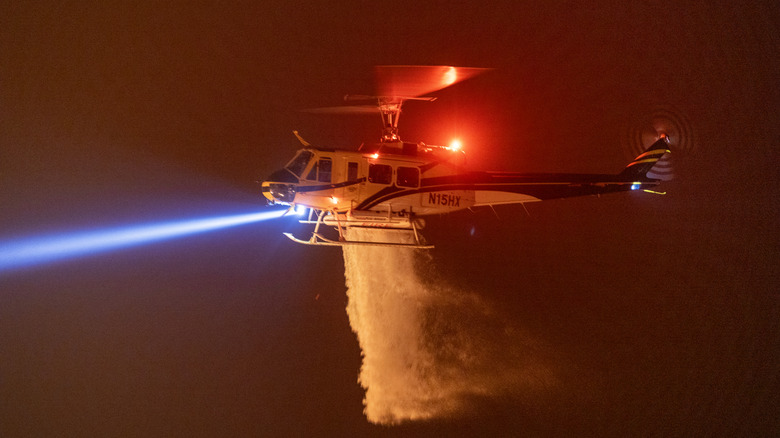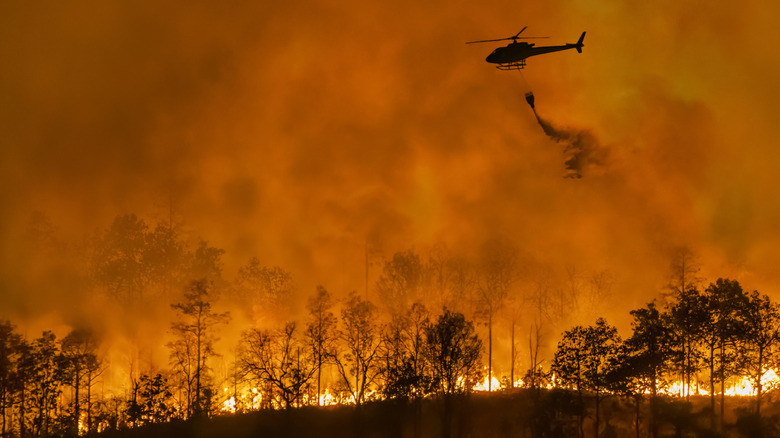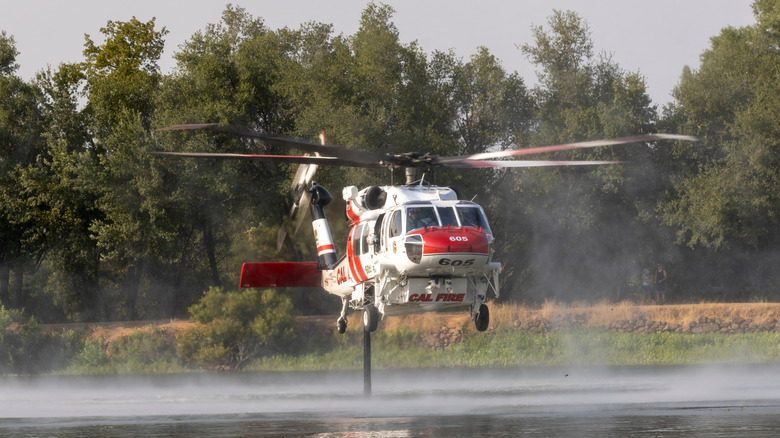What Are Firefighting Helicopters, And How Do They Pick Up Water?
While wildfires are fairly common in California, it is currently reeling under the effects of one of the worst wildfire events ever to hit the state. More than 5,000 acres of land have been consumed by the Palisades fire, the biggest of the three major fires affecting the region. The other two wildfire events — the Eaton Fire (affecting 2,000 acres) and the Hurst Fire (500 acres) have also caused widespread destruction.
Several agencies are working to contain these wildfires, of which the most notable include the California Department of Forestry and Fire Protection (Cal Fire) and the National Interagency Fire Center, both of which have a dedicated fleet of aircraft participating in wildfire missions. These agencies operate a large fleet of aircraft — including fixed-wing planes and helicopters — that work in tandem to contain even the most destructive of wildfires.
These planes and helicopters have a simple job to do: Collect as much water as possible using their collector pans, reach an area badly affected by wildfire, and pour the water directly onto the fire to bring it under control. While planes do play a major role in such operations, firefighting helicopters also play a key role during such missions, owing to their ability to hover over an area and even perform rescue missions.
With more than 60 fixed-wing and rotary-wing aircraft under its aegis, Cal Fire has the largest civil aerial firefighting fleet in the world. Its fleet of helicopters includes the Bell UH-1H Super Huey and the Sikorsky S-70i. As for the National Interagency Fire Center, they classify firefighting helicopters into Type 1, Type 2, and Type 3.
How do firefighting helicopters pick up water?
According to the Forest Service wing of the U.S. Department of Agriculture, firefighting helicopters are allowed to fill their water tanks from lakes, rivers, and any other source of water that is close to the areas affected by fire.
In fact, if there are no reliable water sources nearby, the pilot of a firefighting helicopter can even fill up its water tank using water from swimming pools of private homes. To put it succinctly, any reliable source of water that is quickly and safely accessible to the firefighting helicopter can be used to douse a raging wildfire.
While different helicopters may use the same water source to collect water, how the water is collected may differ depending on the helicopter type. For example, large helicopters with heavy-lift capabilities feature a retractable snorkel system that siphons water from a water source. Smaller helicopters carrying anywhere between 100 to 400 gallons of water have buckets that simply scoop water from the water source using helicopter firefighting buckets. These buckets usually have a release valve that opens up once the helicopter reaches the fire hotspot.
The different categories of firefighting helicopters
As mentioned earlier, the National Interagency Fire Agency classifies helicopters involved in firefighting operations into three categories. Type 1 helicopters are the largest (and fastest) of the lot. These aircraft can carry a large amount of water — over 700 gallons — in a single trip, and are often used for frontline operations. They can also, on occasion, carry up to 15 firefighting personnel. These Type 1 helicopters, thanks to their large size and payload capacity, are also used to transport critical firefighting equipment right into the heart of the affected area.
Type 2 firefighting helicopters are typically used to contain fires that have just begun. They are designed to carry up to 300 gallons of water using a bucket or a tank, and usually support firefighting personnel who are on the ground.
As for Type 3 firefight helicopters, these use even smaller buckets — up to 180 gallons in size — but are faster to reach areas affected by fire compared to their larger siblings. Like Type 2 helicopters, these aircraft are typically used to contain smaller fires to prevent them from transforming into a large infernos.


